Email, like every marketing channel, has undergone major transformations over the years. Yet for those companies who are keeping up with the email revolution, email marketing brings in a hefty ROI. According to recent research by Litmus, ROI for email is $36 for every $1 spent and other research puts this number even higher at $42 for every $1 spent, which is an astounding 4,200% ROI. This is higher than any other channel.
A 2019 survey by Adestra found that over 70% of marketers believe email marketing generates “good” or “excellent” returns as a marketing channel, which is higher than paid search and organic SEO.
More than 70% of consumers prefer email communication as their source for updates from the businesses they follow.
Email is also a top distribution channels for both B2C and B2B marketers.
87% of B2B marketers use email as a distribution channel and 79% of B2C marketers.
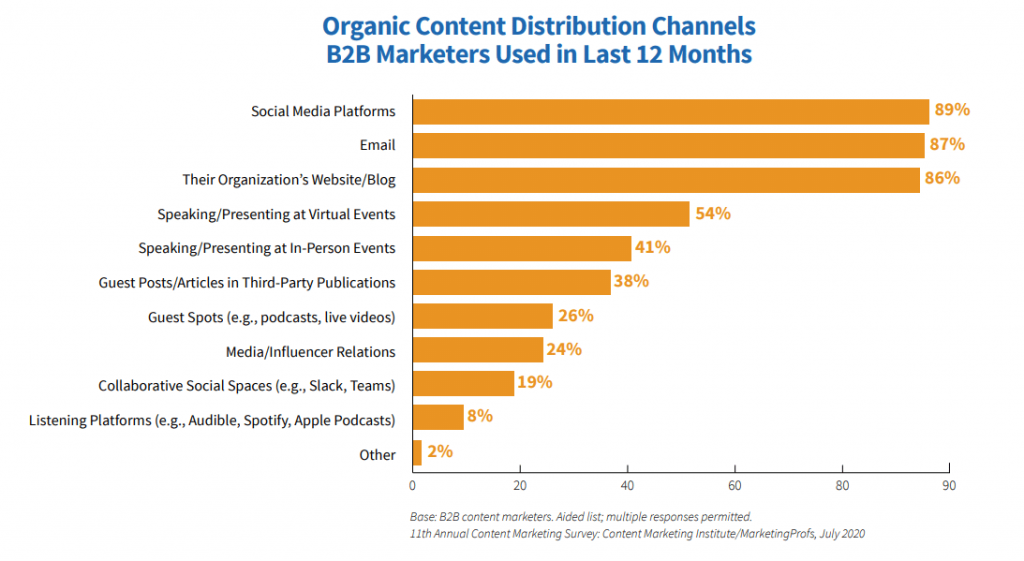
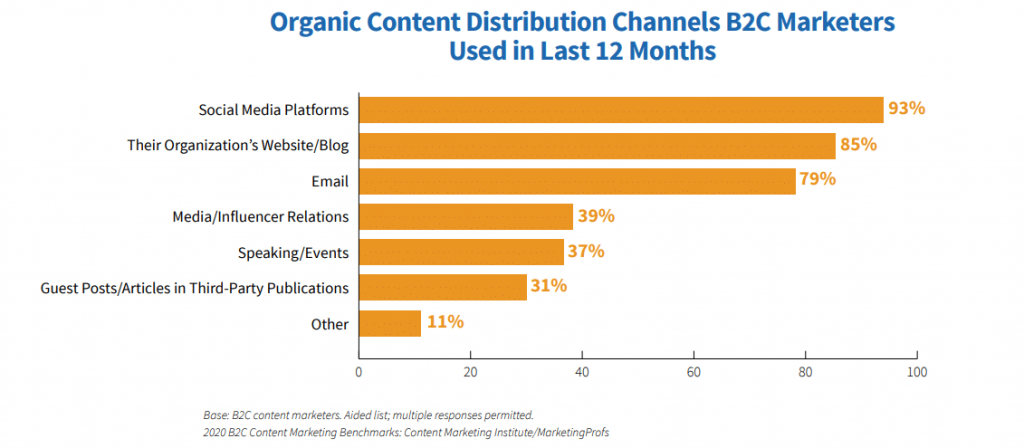
(Image source: contentmarketinginstitute.com)
Although email may be a high-performing and often used channel, many brands struggle to measure ROI. According to the research by Litmus, 25% of companies state they only adequately measure ROI from their email efforts, and less than 13% reported they are doing “well” or “very well” in analyzing results from their email investments. In fact, a full half (50%) of survey respondents reported that they measure ROI “poorly,” “very poorly,” or “not at all.”
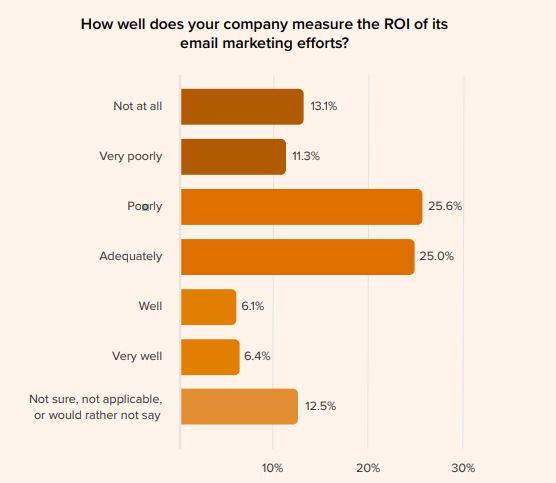
Despite the best of intentions, many email marketers are struggling to realize the full potential of their email programs. A lack of quality data and poor coordination between email marketing and other departments were listed as top challenges for marketers.

Take a look at these additional statistics:
- 4 out of 5 marketers said they’d rather give up social media than email marketing. (Litmus, 2020)
- 78% of marketers in 2020 said email is important to overall company success, compared to 71% in 2019. (Litmus, 2020)
- 35% of marketers send their customers 3-5 emails per week. (Not Another State of Marketing, 2020)
- 78% of marketers have seen an increase in email engagement over the last 12 months (Not Another State of Marketing, 2020)
- Across all industries, the average email open rate is 19.8%, the click-through rate is 11.3%, and the bounce rate is 9.4%. (Constant Contact, 2021)
Email has the potential to be a top revenue generator if you know where to begin. Here are 5 practical tips to help increase your email marketing ROI.
One: Optimize for Mobile
I can’t stress the importance of this enough but your emails must be mobile-optimized. According to HubSpot, 46 percent of all email opens now occur on mobile. Your customers will delete your emails or unsubscribe from your lists if your emails aren’t formatted for mobile consumption. There are tons of resources available on best practices for optimizing for mobile such as the best title length, graphic usage, and ways to use copy.
Two: Personalize Your Communications
Emails with personalized subject lines are 26% more likely to be opened and marketers have found a 760% increase in email revenue from segmented campaigns. While many marketers understand the value of personalization, many are unsure where to begin. However not using some type of personalization and segmentation can lead to 50% of people unsubscribing from your lists, according to research by Silverpop.
Effective email personalization requires data. Start with the low-hanging fruit – the 1st party data you already have at hand. Use first names and other demographics and behavioral data you may have on hand such as age, gender, geography, and transactional history. Are you emailing customers or prospects? Are they high-value customers that can be rewarded with special offers or have they not made a purchase in a while and would be most apt for a retention email program? Append 3rd party data for deeper insights into behavior, interests, lifestyles or to add missing data elements to your file.
Research by Monetate looks at data sources used for personalization by brands in the retail, travel & hospitality and insurance industries. The majority of retailers indicated purchase history (93.8 percent) was used most often, followed by email activity (88.1%), website behavioral data (72.4%), and mobile actions (66.5 percent).
Email activity was ranked highest by travel & hospitality and the insurance sector, followed by purchase history for travel & hospitality marketers and website behavioral data for insurance brands.
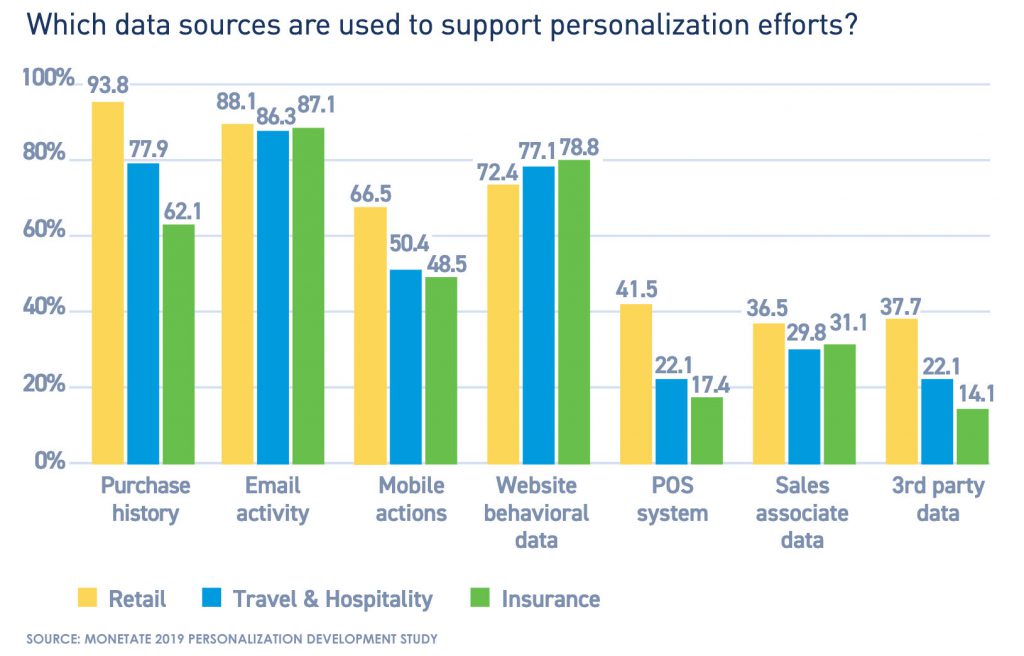
In an older report by The Relevancy Group, data elements that marketers used most often to segment and personalize their email campaigns included demographic data (41%), geographic data (39%), with additional respondents citing customer satisfaction survey data (34%) and clickthroughs on email offers (33%) as the top data elements.

Additionally, the more often you use dynamic content and personalization, the better the performance. According to Litmus, brands that never or rarely include dynamic content for personalization see an email marketing ROI of 12:1, compared to 43:1 for brands that “often or always” include it.
Three: Clean Your Email Lists
Like all data, email lists go bad. People move, change their names, and leave jobs. Data lists should be regularly cleansed and updated. For example, if you have missing emails, an email append solution can match email addresses to postal addresses. Solutions can also be used to validate addresses by flagging undeliverables, correct syntactical errors, identify spam traps and more.
Additionally, email cleansing is an important step for email reactivation strategies. Customers will naturally decrease by about 22.5% every year. (HubSpot) Even Amazon, with its 90% retention rate and 100 million customers, loses around 10 million subscribers a year to churn. Reasons people stop engaging with emails include any number of reasons, but certainly at the top of the list is because their contact information has changed. These emails need to be removed or updated in your CRM in order to both preserve your email deliverability reputation and to try and re-engage dormant customers to increase profitability.
If you are going to take the time to invest in your email strategies, be sure you are using the best list of names and emails possible through a regular maintenance program.
Four: Automate Your Campaigns
Today, the relationship customers build with your organization is far from linear. They research and connect with your business many times, across different devices and touchpoints. An email marketing automation platform helps ensure that you don’t miss a beat and are managing and automating crucial touchpoints along the customer journeys based on each individual’s behavior. For example, emails can be personalized and automatically deployed based on if customers have visited your website, browsed certain product categories, opened certain emails, clicked on specific offers, have an abandoned cart, and so on. While many marketers report that they are using some sort of automation, it is important to continually analyze gaps where automated email content sent at the right time can further drive conversions.
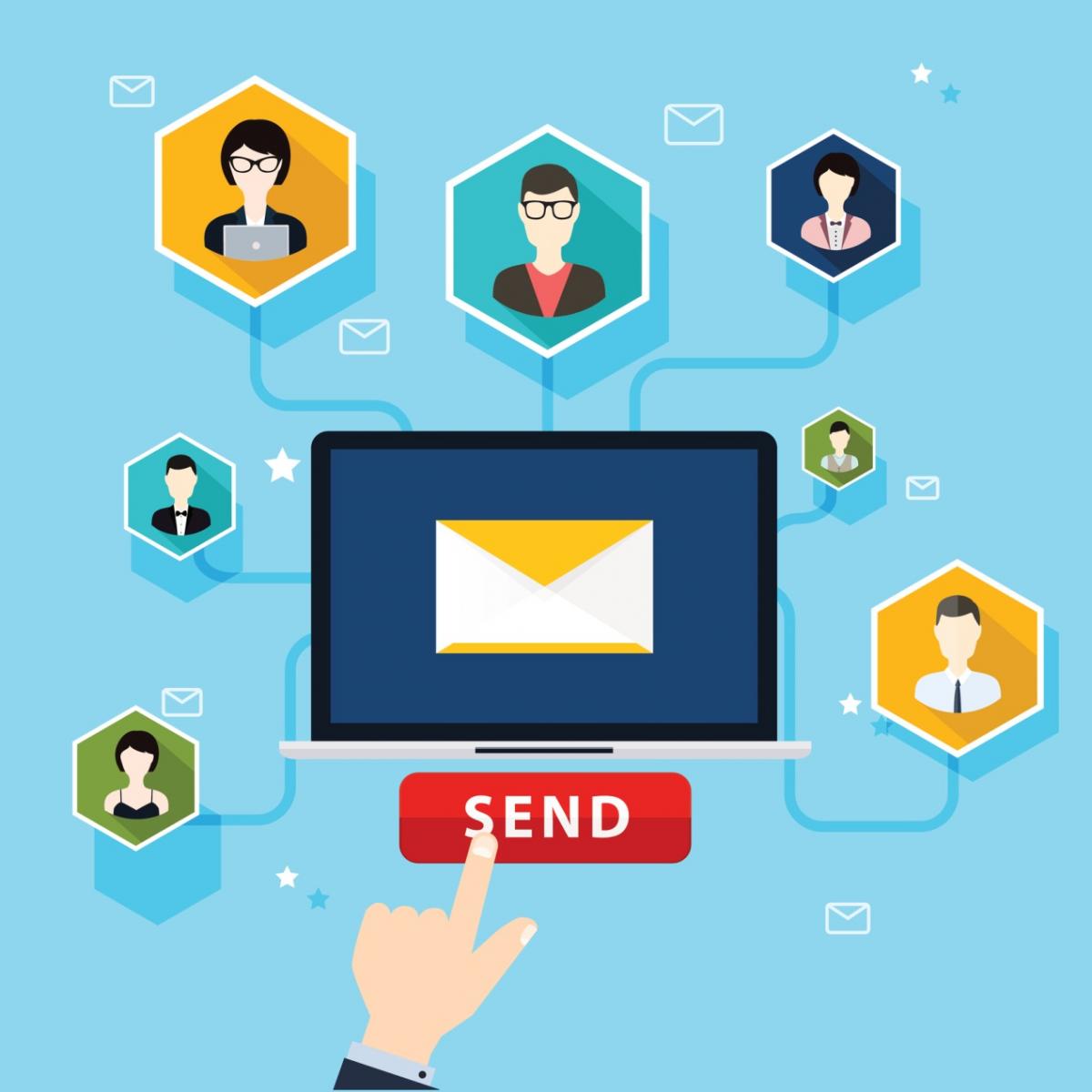
Five: Test and Analyze
Email marketers test their subject lines more than everything else but you need to think bigger. Yes, an email subject line is hugely important but there are many elements to a successful email program that should also be taken into consideration. In addition to subject line, it is important to continually test and analyze the call-to-action, message, day of the week sent, layout and images, time of day sent, and other key attributes.
Email marketing is about more than sending every customer or prospect every email offer, coupon, or company announcement. Email can be a powerful tool with the right mix of data and when strategies are optimized and tested.




